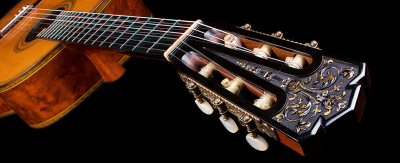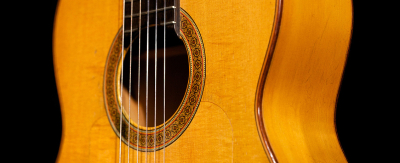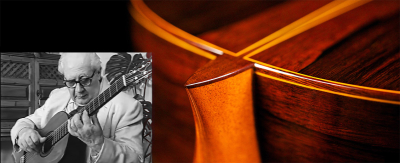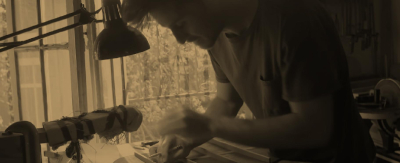Jose Ramirez: Myths and Facts
Current Inventory | Past Inventory
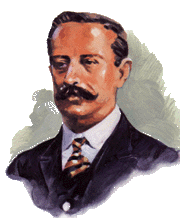
Jose Ramirez: Myths and Facts
Myth: My guitar was made by the old man himself!
Fact: Very unlikely. My first response is which old man: José Ramirez I, II, III, IV (not so old)? After that, keep in mind that the José Ramirez workshop has employed many workmen in the shop over the years. Of all of the great Ramirez guitars played by Segovia and his students during the 1960s, very few if any were actually made from start to finish by José Ramirez III. This was simply not the practice. Ramirez III acted as maestro of his shop since the 1950s, but his journeymen were the hands-on workers. I do not mean to imply that as a result these great instruments were inferior. On the contrary, it is testimony to a great design that it can be repeated by so many different individuals. However, most of these great guitars were made by people other than Ramirez I, II, III or IV. In short, the signature below the label does not mean the guitar was made by José Ramirez, only that it met his criteria and approval.
Myth: The Segovia Model with a gold label on the inside was a model above the standard Ramirez 1a guitar.
Fact: Ramirez never built or approved a “Segovia Model” guitar. According to a letter dated May 24th, 1983 from José Ramirez III to Mr. George Dauphanais (Ramirez distributor during the 80s), the so-called Segovia Model was created by Jim Sherry during the 70s (his previous distributor). The letter goes on to say that the gold label was applied by Sherry over part of the Ramirez label. During the late 60s and throughout the 70s José Ramirez exported two principal models: 1a, or “first class” guitar with a blue label, and 2a or “second class” guitar with a red label. In the same letter, Ramirez claims that his 2a guitars utilized backs and sides made from inferior materials and thus were sold as 2a models. To both the 1a and 2a guitars a “Segovia Model” gold label was applied over the Ramirez label by Sherry without permission. Ramirez was clearly upset about this procedure as it concealed his intent to market the 2a guitar. My experience of these Segovia models is that they are indistinguishable from the actual Ramirez 1a and 2a models. The “Segovia” model, therefore, was purely a marketing device.
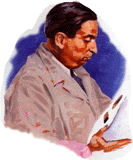
Myth: The great Ramirez guitars were made in the 1960s or at least pre-1974.
Fact: I have seen very mediocre Ramirez guitars from the 60s and great ones from the 90s, and the reverse, as well. The guitars from the 60s are surely more aged and have a seasoned sound. However, even using excellent examples from the 60s and average ones from the 90s, in a blind test, they are very hard to distinguish. (Blind tests, i.e., where the listener does not know the make of guitar he is hearing are an excellent way to humble the critic.) Since the early 60s, Ramirez guitars have had a very distinctive sound which has remained more or less the same for more than thirty years–a remarkable feat, considering the number of instruments produced (around 20,000) and the number of workmen responsible for their construction during that time. A better argument could be made that the great era was just prior to the 60s when Ramirez guitars were lighter and smaller, both in body and sound, but with great character and personality. Some of my favorite Ramirez instruments were made in the workshop from the mid to late 1950s.

Myth: The initials on the foot of the guitars from the 60s and early 70s were coded using middle initials in order to keep the public from knowing the makers true identity.
Fact: During the time the initials were stamped on the foot of the guitars, they were the actual initials of the maker. It is customary in Spanish culture to take the last name of both the father and the mother, in that order. For example, Paulino Bernabe Almendariz is the complete first and last (no middle) name of the maker usually known as Paulino Bernabe. Therefore, he could have stamped PB (which he did, at least sometimes) or PA, as he chose. There were some luthiers in Ramirez workshop who used the first name and mothers last name. I assume this was either for personal reasons or to avoid confusion between journeymen with otherwise identical initials, not as a code. “Things about the Guitar” by José Ramirez III is an excellent book which I recommend to anyone interested in the history of the Ramirez family and the opinions of José Ramirez III about all aspects of guitar making. Here you will discover many more myths dispelled, and a few new ones created.
0 comment

